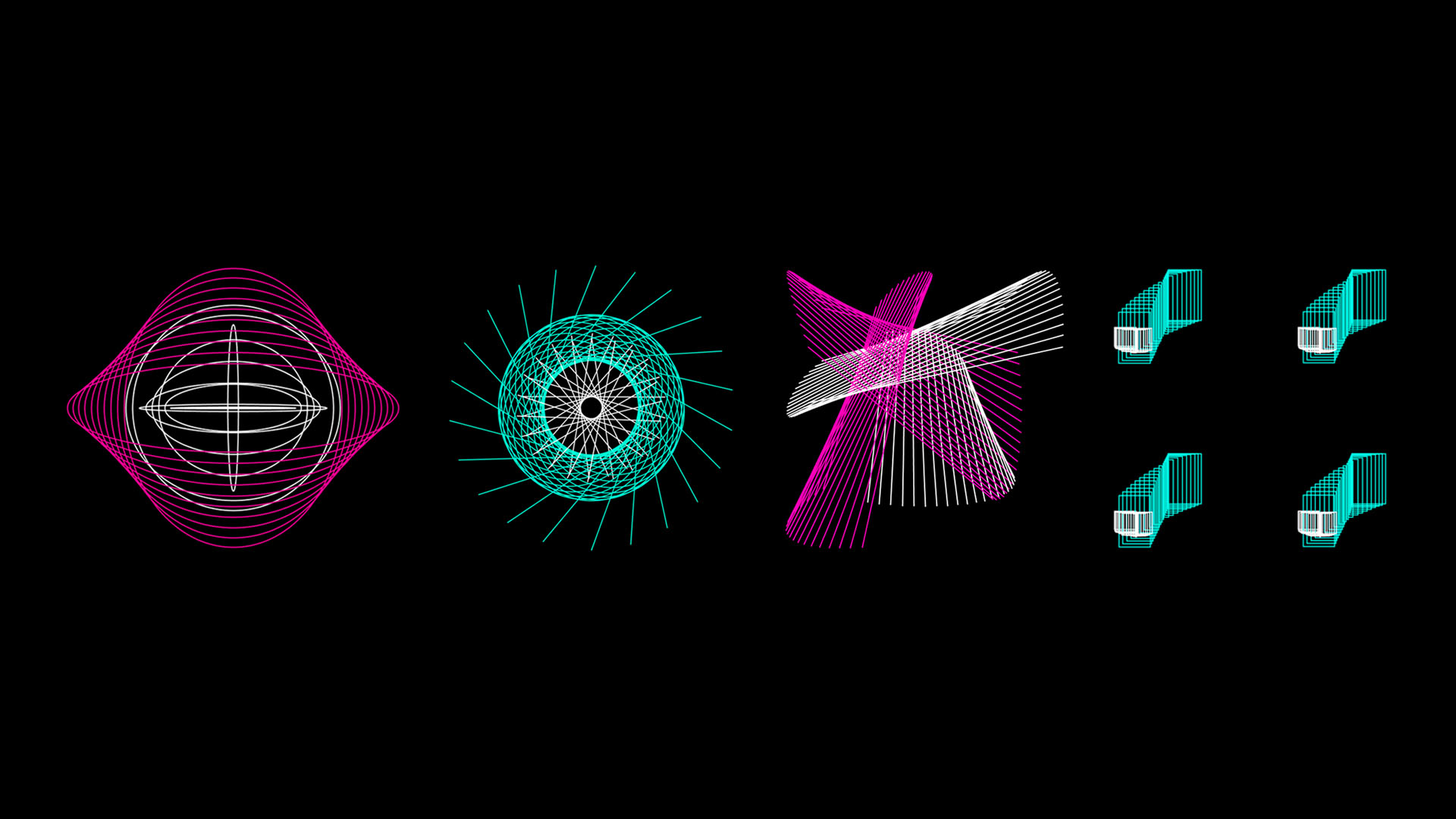Electronic Abstraction
For my final project I decided to create a series of animations inspired by the work of John Whitney, an animator and inventor often regarded as the pioneer of computer graphics.
produced by: Harry Wakeling
Introduction
I was introduced to Whitney’s work as I have always been interested in early examples of computer animation and film. Over the last few years I have experimented with video art, utilising techniques such as video feedback and circuit bending to produce psychedelic motion-based pieces. Through this experimentation I was introduced to the oscilloscope, one of the first devices to display real-time visual output from a computer. It was used by Whitney and his contemporaries to control the movement of electronic beams, visualising signals such as sine waves to display vector graphics; this was used to create some of the first examples of video games and computer-based animation. I felt it would make an interesting project to produce an animation in Processing that could be displayed on an oscilloscope, combining contemporary software with a device that formed the foundation of digital art.
Project Development
After studying his animations I realised that he made frequent use of sine and repetition. In order to create work that effectively paid tribute to his style, I felt it was important to implement these within my animations. All 4 scenes include geometric shapes that have been animated with sine, as well as repetition using for loops. The project also saw me delve into object-oriented programming. I had experimented with this briefly in a previous assignment and I was interested in learning about it further; I felt this would be necessary if I were to create a sketch where the user toggles between different scenes smoothly. The ability to store data and functionally into separate objects proved to be very useful, as it made organising and structuring my work a lot easier. I implemented code that allowed the user to toggle between each animation by pressing different keys. I also set up sliders that allowed the user to modulate each animation, as well as the colour of various shapes.
After I had completed the animations, it came time to figure out how to display them on my oscilloscope. I came across the work of Ted Davis, an artist and programmer who created a Processing library called ‘XY scope’. This library allowed the user to convert vector graphics into audio signals, enabling them to display animations on oscilloscopes and CRT displays. After some experimentation and tweaking, I was able to get my animations to appear on the display.
How to use
Use buttons 1, 2, 3, and 4 to toggle between each scene. The user can also modify each animation using sliders.
Further development
I conclusion, I feel happy with the work produced on this project. I am glad to have learnt the basics of object-oriented programming, as I feel this will prove to be very useful going forward on the course. I am also particularly happy that I got the animations to display on my oscilloscope; I believe this was an important part of my project in terms of creating a piece reminiscent of Whitney’s style. I believe this project has the potential to be developed further; I would like to implement more interactive elements using the oscilloscope, for example getting it to work with a Kinect, or perhaps displaying real-time data. I would also like to experiment with other vector displays on a larger scale, for example a CRT screen.
References
- https://www.youtube.com/watch?v=-wiverLQl1Q&list=PLRqwX-V7Uu6bXUJvjnMWGU5SmjhI-OXef&ab_channel=TheCodingTrain
- https://www.youtube.com/watch?v=ZrKgyY5aDvA&ab_channel=crystalsculpture2
- https://www.youtube.com/watch?v=LaarVR1AOvs&t=296s&ab_channel=AlexanderMiller
- https://www.youtube.com/watch?v=ehT7d9JPulQ&ab_channel=thedotisblackcreativecoding
- https://teddavis.org/xyscope/
































































